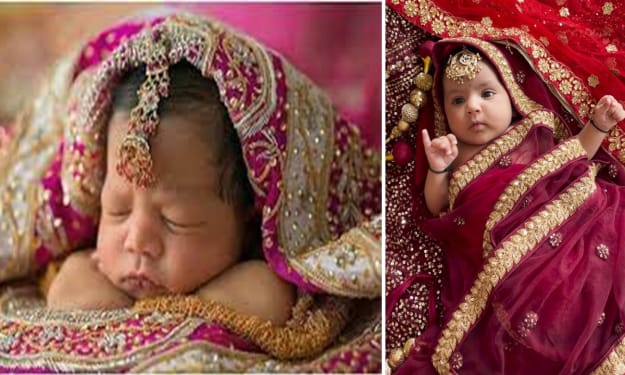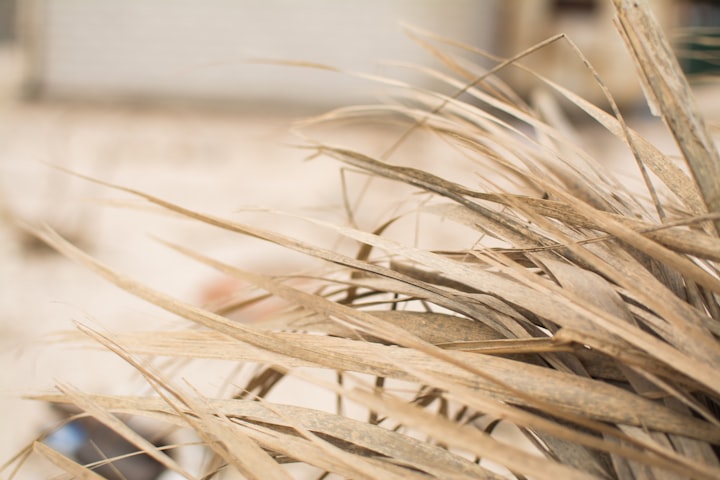Bidd: Sharing Blessings Through Dry Fruits, Sweetmeats, and Henna
Marriage Rituals in Punjab

Introduction:
Bidd is a cultural tradition that holds significant meaning in various regions and communities. This practice involves the parents of the groom bringing dry fruits, sweetmeats, and henna as part of the wedding procession, known as the barat. After the bride's family bids farewell, these items are distributed among the community as symbols of blessings and goodwill. In this article, we will explore the rich cultural significance of Bidd and delve into the symbolism and traditions associated with the sharing of dry fruits, sweetmeats, and henna. We will also examine how this practice fosters a sense of community, unity, and celebration during weddings.
The Significance of Bidd in Cultural Celebrations:
Bidd is deeply rooted in cultural traditions and serves as a special custom observed during wedding celebrations. This practice is known by different names and variations across various regions, reflecting the diverse cultural fabric of different communities. It holds significant meaning and symbolic value for the families involved and the broader community.
Bidd signifies the expression of gratitude, joy, and blessings during the wedding festivities. It is an opportunity for the groom's parents to appreciate the bride's family for entrusting their daughter's future to their son. Through the act of bringing offerings such as dry fruits, sweetmeats, and henna, the groom's family seeks to convey their heartfelt appreciation and good wishes.
Symbolism of Dry Fruits, Sweetmeats, and Henna:
Each item included in the Bidd holds symbolic meaning and represents various aspects of the wedding and marriage journey.
Dry Fruits:
Dry fruits, such as almonds, cashews, raisins, and pistachios, are often included in the assortment of offerings. These fruits are renowned for their nutritional value, richness, and association with prosperity. By presenting dry fruits, the groom's family wishes the couple a life filled with abundance, good health, and prosperity. It symbolizes their desire for the newlywed couple to embark on a journey of well-being and success.

Sweetmeats:
Sweetmeats, or mithai, are an integral part of celebrations in many cultures. They are carefully selected to represent the joy, sweetness, and happiness associated with weddings. These delectable treats, often made with ingredients like sugar, condensed milk, and various flavors, are shared as a gesture of spreading delight and celebrating the auspicious occasion. Sweetmeats also symbolize the hope for a sweet and harmonious married life for the couple.
Henna:
Henna, derived from the leaves of the henna plant, is known for its vibrant color and traditional use in intricate hand and feet designs. It is considered a symbol of beauty, auspiciousness, and new beginnings. The application of henna on the bride's hands and feet is a traditional practice that signifies blessings, good luck, and marital bliss. Including henna as part of the Bidd emphasizes the desire for the bride to embark on her married life with beauty, grace, and auspiciousness.
The Act of Sharing and Community Engagement:
Bidd goes beyond being a simple exchange of offerings; it serves as a means to engage and involve the community in the wedding celebrations. This practice fosters a sense of unity, togetherness, and shared joy among the families and their wider circle of relatives, friends, and neighbors.
Spreading Happiness and Goodwill:
The distribution of dry fruits, sweetmeats, and henna is an act of sharing and spreading happiness. By sharing these blessings with others, the groom's family expresses their gratitude and extends the joy of the wedding to the community. It creates a sense of inclusivity and allows others to partake in the celebration, even if they are not directly related to the couple. This act of generosity strengthens social bonds and promotes a spirit of unity and harmony.
Fostering Community Bonds:
Bidd serves as a way to foster connections and build relationships within the community. The distribution of these offerings provides an opportunity for individuals to come together, exchange greetings, and offer their blessings and well wishes to the couple. It becomes a time for community members to connect, socialize, and share in the joyous atmosphere of the wedding. The act of distributing the items helps forge stronger community bonds and promotes a sense of belonging and camaraderie.
Cultural Preservation and Continuity:
Bidd plays a crucial role in preserving cultural traditions and passing them on to future generations. Through this practice, younger members of the community witness and actively participate in the customs and rituals associated with weddings. They learn about the significance of these traditions and the values they represent. By involving the community in the celebration and sharing the cultural offerings, Bidd helps ensure the continuity of cultural heritage and traditions for generations to come.
Evolution and Adaptation of Bidd:
While the essence of Bidd remains unchanged, this cultural practice has also evolved and adapted to modern times. Today, families may incorporate additional elements or modify certain aspects of the tradition to reflect their personal preferences and contemporary values. For instance, the assortment of items may include other symbolic objects, personalized gifts, or even charitable donations to give back to the community.
Furthermore, the advent of technology and social media platforms has allowed families to extend the reach of Bidd beyond physical gatherings. They can now share the blessings and well wishes virtually, engaging a broader audience and connecting with friends and relatives who may be geographically distant.
Conclusion:
Bidd, through the sharing of dry fruits, sweetmeats, and henna, holds deep cultural significance and serves as a beautiful tradition during weddings. This practice encompasses the expression of gratitude, the spreading of blessings, and the engagement of the community in the joyous celebration. It symbolizes prosperity, sweetness, beauty, and auspiciousness for the newlywed couple. By involving others in the sharing of these offerings, Bidd fosters unity, strengthens community bonds, and preserves cultural heritage. As this tradition continues to evolve, it remains a cherished part of wedding ceremonies, reflecting the values of gratitude, inclusivity, and the desire for happiness and well-being for all.
About the Creator
Dr. Amjad Ali Bhatti
Dr. Amjad Ali Bhatti is a multifaceted individual who has made significant contributions in the fields of research, translation, literature, and social activism.






Comments
There are no comments for this story
Be the first to respond and start the conversation.